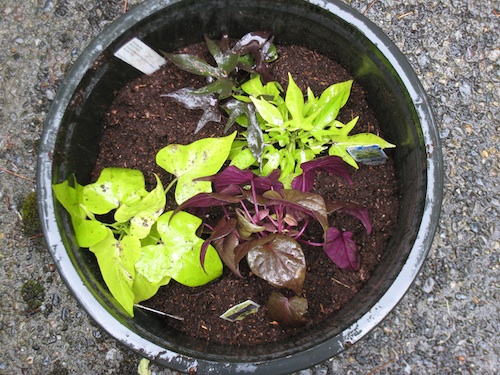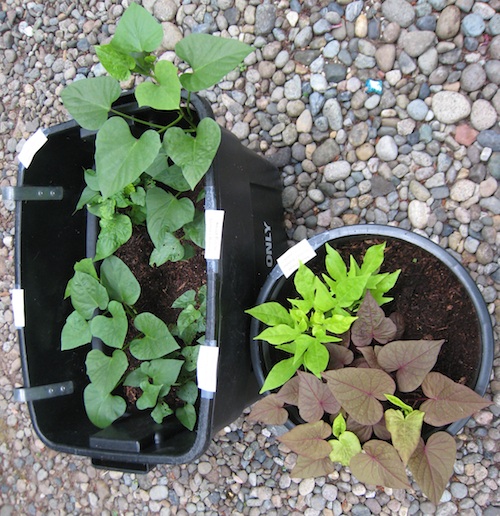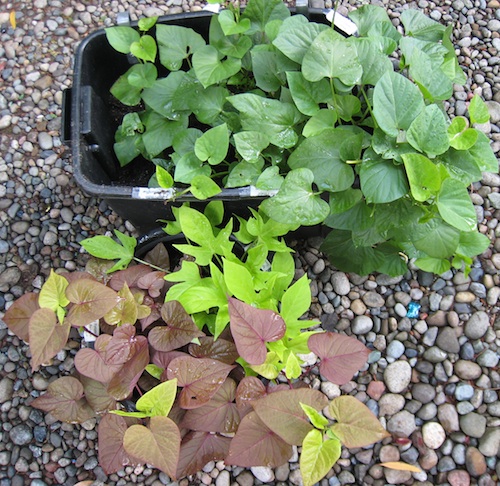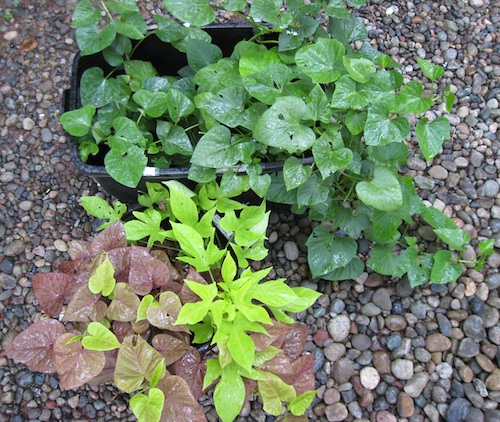Plant of the Month: November 2010
|
| Sweet Potatoes in Seattle |
| Ipomœa Batatas (L.) Lam. |
CONVOLVULACEÆ; Bindweed Family
|
| During 2010, I tried to grow sweet potatoes in Seattle. That is a bit like trying to keep fish out of water. This article details my approach and findings. Briefly summarized: I learned that cultivars vary immensely, and that growing sweet potato plants for their edible leaves is well worthwhile; but for their swollen roots alone, I found them not worth space in a garden here. |
The sweet potato is well known as a crop adapted to, and thriving in, warm and hot places. It is easy to grow there. Gardening books assign it USDA climate zones 9 through 12. In terms of its cultural preferences, it has little in common with its unrelated namesake the common potato Solanum tuberosum L. The latter is in another plant family (Nightshade), requires little summer warmth, and its leaves are poisonous even cooked. A nutrient comparison of the common or Irish potato, and the sweet potato, reveals that compared to common potatoes, sweet potatoes are higher in fat, lower in protein; higher in minerals; way higher in vitamin A.
|
Globally, the world's food crops rank about as follows, in millions of metric tons per year:
|
|







